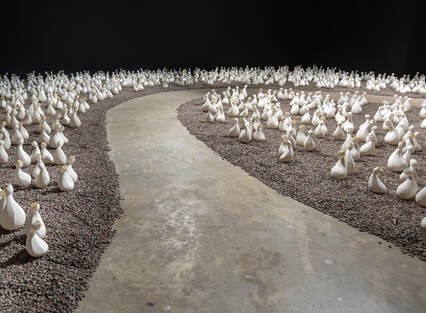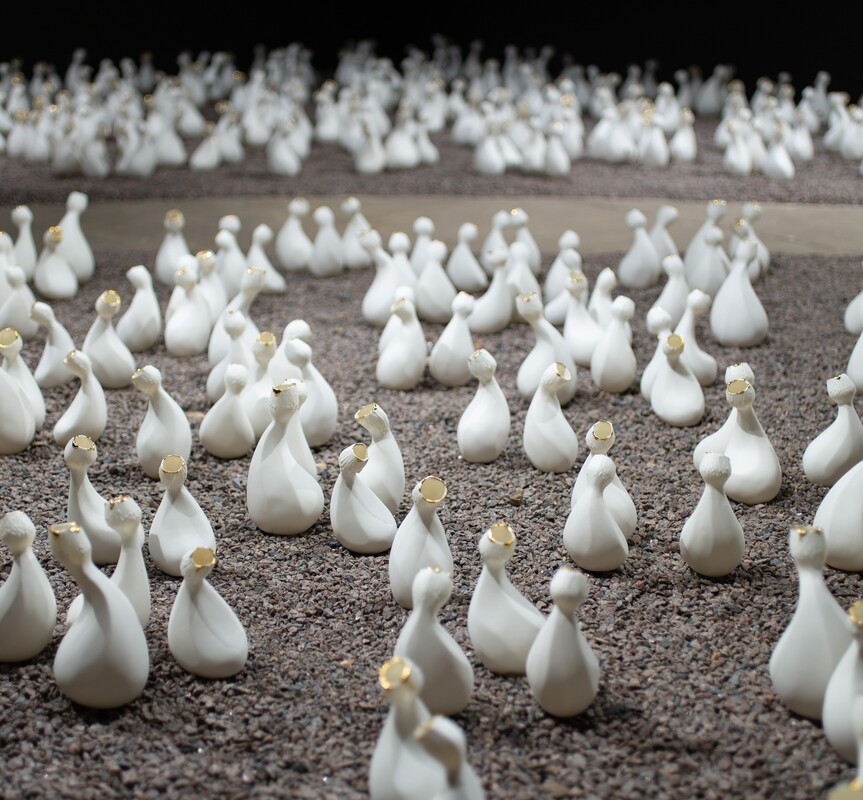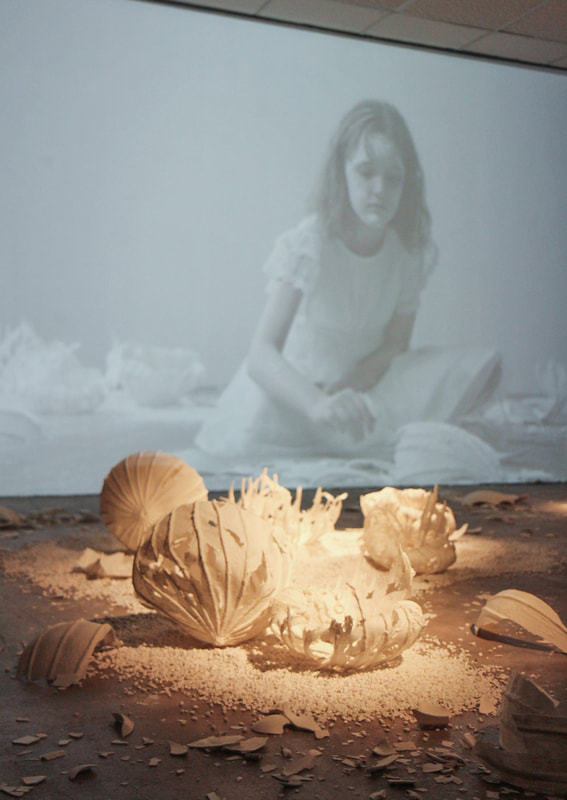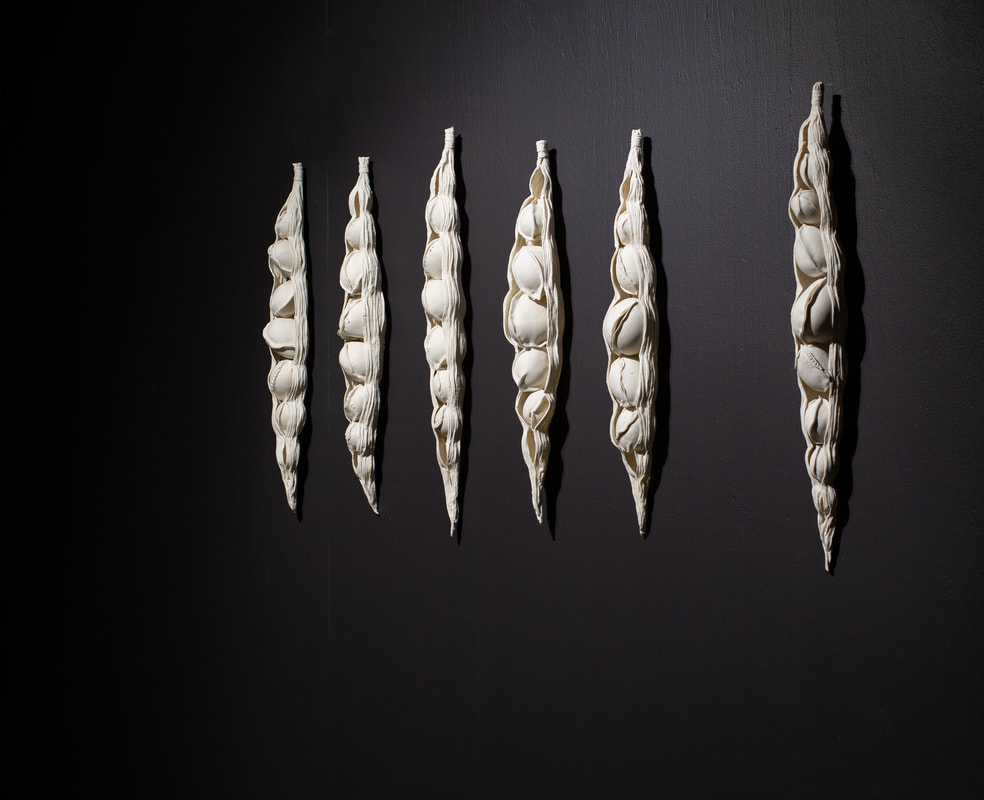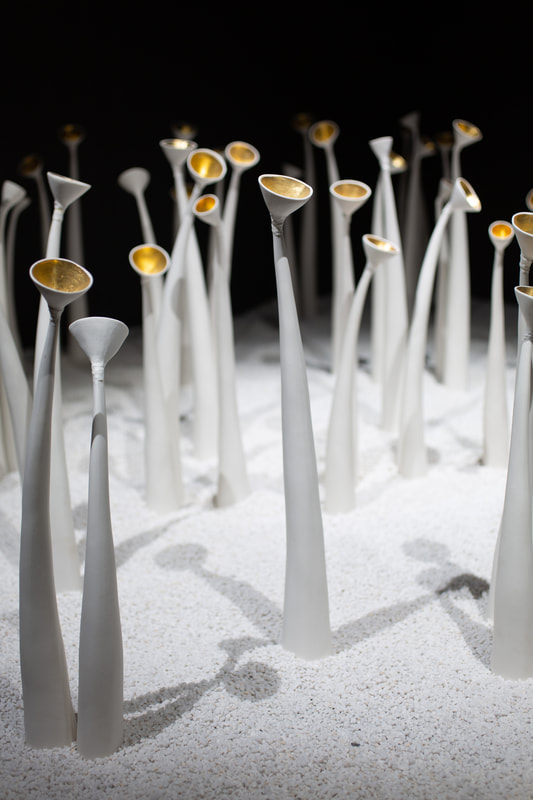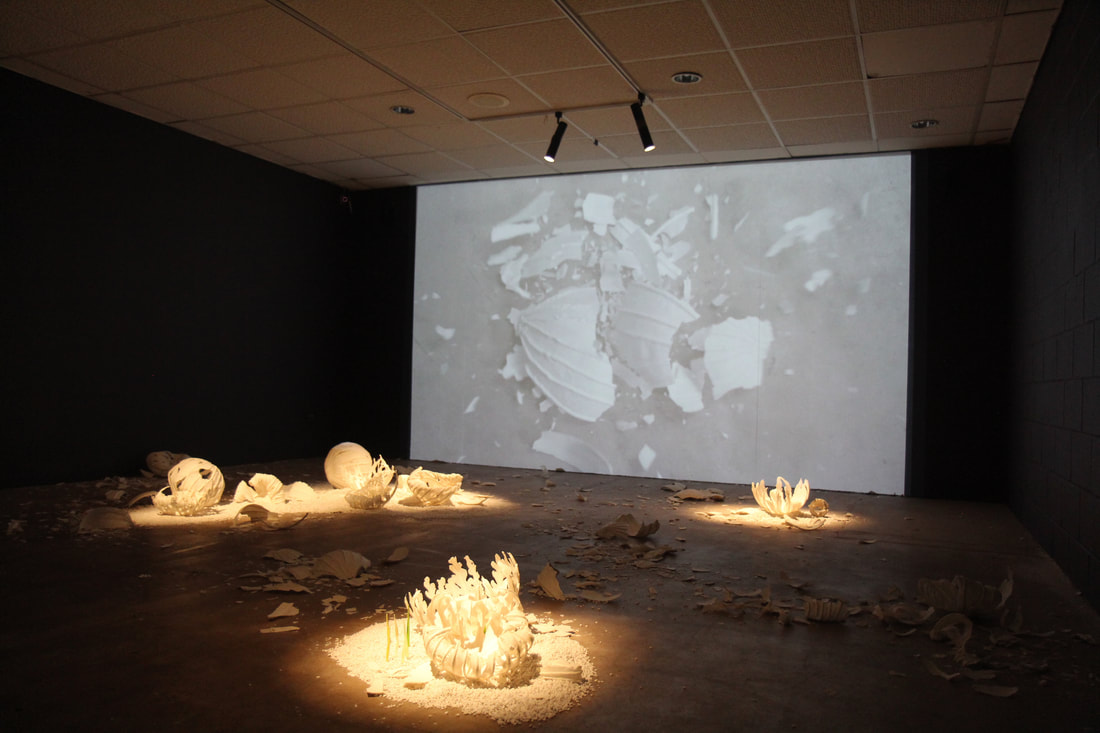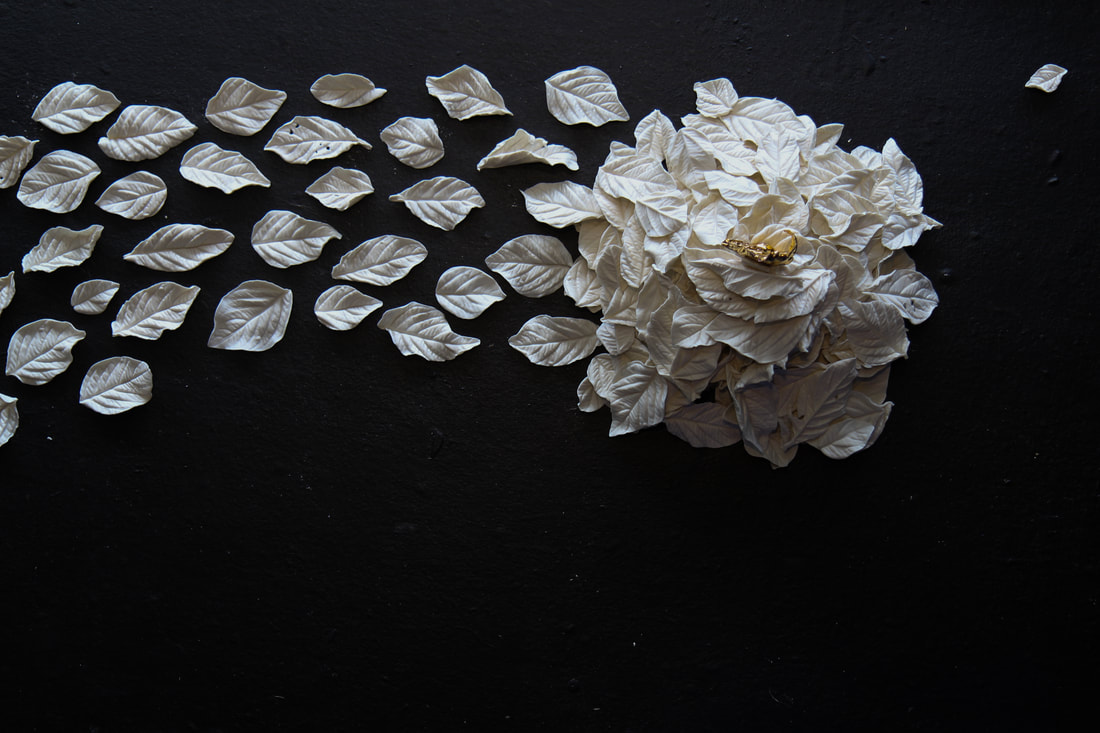Botanically Porcelain"In Dawn Beasley’s Botanically Porcelain, a path winds through a thousand fragile sculptures. As you watch each careful step, you become entirely conscious of your body within the space, and your connection to the delicate objects that surround you.
Sensing their vulnerability, you find yourself imagining the possibilities of what could happen. Alive with the knowledge that just one misstep could wreak havoc and destruction, impossible to reverse. Standing in the middle of this floor-based installation, the enormous power we have as individuals is revealed." Kate Land
Assistant Curator Northern Centre for Contemporary Art |
|
Interview with the artist
As individual pieces your sculptures are striking. Can you describe what happens when you bring these forms together in such a grand scale? It’s all about the drama, the immersive quality of being able to step into an artwork. I love that sense of creating an experience that the viewer can enter into. It creates scale from the small and it’s interesting that as the work as a whole becomes more visible, the individual piece becomes less so. Repetition creates rhythm and movement within stillness, your eyes start to search for patterns and interplays between the pieces, you find stories and relationships and imbue it with a sense of life. You’ve captured a sense of the full life-cycle of nature, from seed to husk. Was that important to you in creating this body of work? I’m not sure that I had that intention but it’s interesting that the resulting collection of works does just that. Each work was developed as an individual experience, but as I was always conscious of the works also being shown alongside each other and that the overall narrative was as important as the individual installations. These botanical forms are intentionally abstract, and not referencing a particular region or species. Why is this? And how has the Northern Australian landscape impacted your work?
The botanical forms are intentionally ambiguous, but they are very much rooted in the natural forms that surround me. The intention is that the works represents the botanical without being species-specific. I love that people can find their own reference within the works. You’ve spoken about the power of humankind to heal or destroy. What does this body of work say about the human experience and survival? There seems to be something twisted in our value system and a disengagement with the natural world. As individuals most of us can see it, but self-interest continues to push us down a path that we know isn’t serving our long-term survival. What’s next for your creative practice?
I have such an exciting year of travel and creativity ahead. I travel to Japan for the first half of my Churchill Fellowship just after this show closes, and then later in the year I’ll visit the UK for the second half. My Japanese journey will be all about aesthetics and craftsmanship as I travel from Okinawa to Tokyo through many of the ancient kiln sites and visiting studios and galleries. In the UK my focus will be on the adaption of industrial production techniques to the studio setting, working with mould-makers from the historic potteries in Stoke on Trent. All of this knowledge will inform my own practice and I’m so utterly thrilled by the opportunity to further my own work through some intensive learning experiences. |
KL: This exhibition is rich in binaries. At once fragile and strong, soft forms are rendered in hard ceramic, growing buds forever frozen in time. This symbiosis has been a strong theme in your practice over the years. What have you learnt through balancing fragility and strength?
DB: Working with porcelain is all about the balance between fragility and strength, that’s the characteristic that makes it so enticing to me. Experimenting within the tipping point zone with super-thin translucency and toying with porcelain’s slumping characteristics at high temperatures. I enjoy the constant discovery of exploring the properties and limitations of this medium. Seed, which was newly developed for this show, involved destroying some sculptures in situ. Can you talk through the significance of this destruction? Why was it something you wanted to do?
This installation explores the fragility of existence. Skeletal forms suggestive of growth and decay set within a seemingly barren landscape of destruction. The breaking of sculptural forms, artworks of worth, is symbolic of a misplaced value system, human interference with the natural order and of something irretrievable. And how did it feel to shatter these sculptures? Liberating! I spend so much time in my studio trying not to break things! The intention to create works destined for destruction removed much of the anxiety of the perfectionist within, and I think, led to some of my best work to date. Flashes of gold contrast with the starkness of the white porcelain. Does gold have a particular symbolism in your work? The choice of gold against the satin whiteness of the unglazed porcelain was both an aesthetic and symbolic choice. The symbolism is that of misplaced value. Where does real wealth lie? What role do you see art as playing in social change?
It’s instrumental. When you think about how the arts have already helped to shift views on body image, gender, race and climate you realise that it is the voice of the people. Through insistence, outrage, idealism and/or thought provocation it generates dialogue, and shifts perspectives. The new becomes normalised… frustratingly slowly. There is a real sense of hope to your work. What do you hope people will take from this exhibition? Something uplifting, a glimpse of the possible, lasting memories of white forms, glints of gold, discoveries of interplays, lit with a dark space. Funding for Botanically Porcelain was supported with a grant from Australia Council for the Arts to develop the work. The touring of the work was made possible by the Australian Government's Regional Arts Fund, which supports the arts in regional and remote Australia.
|
